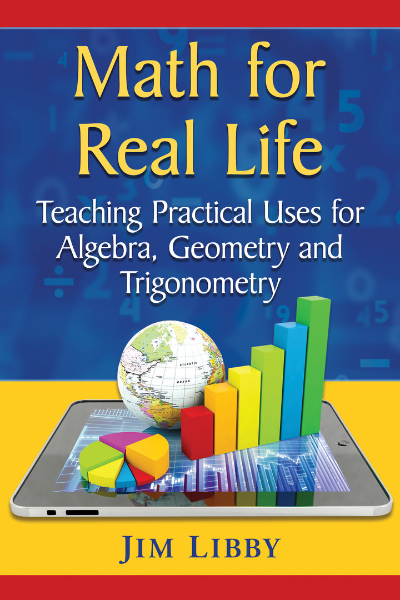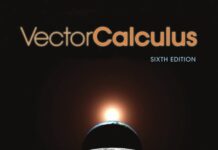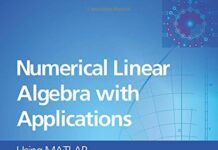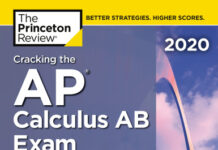| Book Name: | [PDF] Math for Real Life Teaching Practical Uses for Algebra and Trigonometry |
| Category: | Mathematics Books |
| Free Download: | Available |

Math for Real Life Teaching Practical Uses for Algebra, Geometry, and Trigonometry by Jim Libby | PDF Free Download.
| Book Details : | |
|---|---|
| Language | English |
| Pages | 213 |
| Format | |
| Size | 1.83 MB |
Math for Real Life Teaching Practical Uses for Algebra and Trigonometry
Book Description:
“Where are we ever going to use this?” Every high school math student has asked this question. Often teachers themselves aren’t sure how to respond. One answer is that higher mathematics learned in high school will be essential to learning yet more at the college level. A more satisfactory answer calls for an awareness of how math is applied in many specific areas.
Written primarily for teachers, this book presents hundreds of practical applications for mathematics–from baseball statistics to the theory of relativity–that can be understood by anyone with a knowledge of high school algebra, geometry and trigonometry.
Math for Real Life Contents
- Algebra I
- Geometry
- Algebra II
- Advanced Math
- Trigonometry
Preface to Math for Real Life Teaching PDF
Many people react much as the mother on the television show The Middle did when her son got a D on a math paper: “Math is very important in life. you use math in everything…. oh, even I can’t say it as I believe it.”
What are students thinking when they say, “Where are we ever going to use this?” yes, it could be a cynical ploy and not really a legitimate question.
Maybe it’s an attempt to divert the teacher’s attention away from the math at hand. Maybe it’s just a chance to stir things up so it gets a little interesting. yet, even if there are ulterior motives, most students really do wonder what that answer is.
For each student who is daring enough to ask it, there are plenty of others who are thinking about it.
This question doesn’t seem to come up in English classes—or in science, or government, or band, or health class. all of us tend to shy away from parts of our lives that are difficult and pointless.
There isn’t much to be done about the difficulty of mathematics, but mathematics is far from pointless. an argument can be made that mathematics is the most useful development in the history of mankind.
Yet for many potential mathematicians sitting in high school classes, ironically, it seems without purpose. in spite of that, it can be difficult for secondary math teachers to come up with answers to the question “Where are we ever going to use this?” there are several reasons for this difficulty. • Much of the math that is taught in high school needs additional knowledge to be applied. there are many applications available to the individual that understands calculus, although very few high school students will have had calculus. or, perhaps a greater knowledge of the area of the application itself is needed. a math teacher seeking to understand the formula for electrical resistance in a series would probably need to spend a lot more time understanding the electronics than the mathematics.
• Math teachers might be able to draw on past knowledge of applications to answer the question. Many, though, may not have had applications in their background. Current teachers may have had their own high school math teachers that weren’t sure about real-life applications.
Also, potential teacher graduates may be well versed in mathematics, but have, at best, a smattering of classes in physics, chemistry, or economics—the places where real-life applications actually exist.
Applications are found in many different subject areas, but that is part of the problem. a math teacher who knows quite a bit about the theory of relativity might know almost nothing about baseball statistics. one is rarely knowledgeable in all areas.
Understandably, many teachers hesitate to take time out for extra material. Presenting applications takes a certain amount of time and there are ever-increasing demands on teachers to teach the pure mathematics of the course.
Few math teachers get to the end of the school year feeling they covered everything they wanted. While this will always be a concern, this book will show how it is possible to present applications with a minimum of extra time being spent.
Finally, it is just human nature that we forget things. Maybe we know quite a few applications. the problem is that perhaps an application suited to the math worked on in February may only occur to us in April.
“oh, I wish had remembered that then.” While you will likely find applications in this book that you were not aware of; if nothing else, perhaps this book will help with jogging your memory.
at the risk of starting negatively, let’s look at what are not good examples of applications. too difficult. there will be plenty of time for pushing students, but this shouldn’t be one of them.
To present a real-world situation that leaves a portion of the class confused defeats the purpose. students will come away thinking, “oK, I can see how someone could use this stuff, but clearly i won’t be one of them.”
At least with applications, it is probably best to err on the side of too easy. this looks like an application, but it’s not. the following problem was taken from a high school math book. Applications A metallurgist has to find the values of θ between 0° and 360° for which sec(θ) + CSC(θ) = 0.
Find the solutions graphically. in what sense is this an application? Why would a metallurgist do this? isn’t this just another math problem with the word “metallurgist” thrown in? and by the way, what is a metallurgist? students probably will see through this so-called application.
Excuse the cynicism, but one might have the suspicion that the authors of the book know it is a selling point to show how math is used in the real world, so they include some problems like this. Most story problems.
Story problems have their place in math classes. getting students to take a situation and translate it to a mathematical format and solve it is valuable. Likewise, puzzles and various brain teasers can accomplish that same task.
“Three even integers add to 216. What are they?” that is a fine problem, but it isn’t a real-world application. “A room is to have an area of 200 square feet. The length is three times the width. What are the length and width?”
Would this situation come up in real life? the person with this question obviously had a ruler or something if he knew one side was three times as long as the other.
Why doesn’t this guy just use his ruler to measure the length and width if he really wants to know? Math so you can do more math. this isn’t going to be a big selling point.
“One use of determinants is in the use of Cramer’s rule.” student: “I’ve learned this math so I can do more math. thanks.” technically, it counts as an application and examples like this are in this book, but we’re skating on thin ice here. too long or too involved.
We want the applications to be ones with which a large majority of the class understands and feels comfortable. there are times a real-world situation could be worked into a major project.
An algebra I or geometry student, given distances from the sun, could use proportions to create a scale drawing of the solar system. an advanced Math student could also find the eccentricities of the orbits of the planets and comets of our solar system. this could be time well spent.
However, the more involved a project is, the more the chance a student will get bogged down and miss the big picture. theorem: the amount of complexity in a project is inversely proportional to the number of students that comprehend it.
A two-minute presentation by the teacher could accomplish a goal as well as taking several days out for a project. so how should a teacher present real-world situations to a class? from the student’s point of view, the answer to “Where are we going to use this?” can probably be accomplished in one to two minutes. so what are some options?
A teacher may have to resort to something like, “I know they use imaginary numbers in electronics. I’m not sure exactly how, but I know they do.” not ideal, but better than nothing.
A couple of minutes spent showing the class an application may be all that is needed. imaginary numbers are used in measuring capacitance and voltage in alternating current. a brief explanation could be given with a problem or two at the board.
A step beyond this is for the teacher to explain the application, with students working a few examples on their own.
Tell a story. those who may be drifting off will often perk up if the teacher launches into a story. Just talking about how math is used can be a great strategy.
How did we end up with different temperature scales and who exactly are Celsius, Fahrenheit, and Kelvin? How did they figure out cube roots centuries ago? even if it is basically a history lesson and the math doesn’t exactly apply today, students are often still interested.
A teacher doesn’t always have to be in front of a class with a piece of chalk or marker in hand working math problems.
The teacher could choose to develop an application into something more involved, designing an assignment, or a multi-day project. there are many equations used to analyze baseball statistics.
An algebra class could use the statistics found in the newspaper to evaluate players. Despite the previous caution regarding this kind of activity, it has its place
the complete answer is perhaps some combination of these. ultimately teaching is still an art. finally, I would like to take this opportunity to thank those that have helped me in the writing of this book. thank you to the staff of Mcfarland Publishing for giving me the opportunity to bring my thoughts to you.
Many have read my manuscript, primarily relatives who were supportive of what I was doing and were great proofreaders. Donna, David, Steven, and John Libby; Karen and Andrew Howard—thank you for your time, effort, and encouragement.
Math for Real Life: Teaching Practical Uses for Algebra, Geometry and Trigonometry
Author(s): Jim Libby
Publisher: McFarland, Year: 2017
ISBN: 1476667497
Download Math for Real Life Teaching Practical Uses for Algebra and Trigonometry in PDF Format For Free.
Related Results : math class for real life wsj,math for real life,math for real life book,math for real life for dummies,math for real life for dummies pdfmath for real life jim libby,
Related More Books
See More POST On : General Subjects Books









![[PDF] Draw Buildings and Cities in 15 Minutes Draw Buildings and Cities in 15 Minutes pdf](https://www.freepdfbook.com/wp-content/uploads/2021/06/Draw-Buildings-and-Cities-in-15-Minutes-218x150.jpg)








![[PDF] Digital Image Processing An Algorithmic Introduction Using Java Digital Image Processing An Algorithmic Introduction Using Java](https://www.freepdfbook.com/wp-content/uploads/2022/06/Digital-Image-Processing-An-Algorithmic-Introduction-Using-Java.jpg)




![[PDF] 43 Years JEE ADVANCED + JEE MAIN Chapterwise & Topicwise Solved Papers 43 Years JEE ADVANCED (1978-2020) + JEE MAIN Chapterwise & Topicwise Solved Papers Physics PDF](https://www.freepdfbook.com/wp-content/uploads/2022/03/43-Years-JEE-ADVANCED-1978-2020.jpg)

![[PDF] Problems in Physical Chemistry for JEE (Main & Advanced) Problems in Physical Chemistry for JEE (Main & Advanced) Free PDF Book Download](https://www.freepdfbook.com/wp-content/uploads/2022/03/Problems-in-Physical-Chemistry-for-JEE-Main-Advanced.jpg)
![[PDF] Engineering Physics (McGraw Hill)](https://www.freepdfbook.com/wp-content/uploads/2021/05/bafc8c2685bb6823a9c56134f7fba5df.jpeg)

![[PDF] Engineering Chemistry By Shashi Chawla](https://www.freepdfbook.com/wp-content/uploads/2022/05/Theory-And-Practicals-of-Engineering-Chemistry-By-Shashi-Chawla-free-pdf-book.jpeg)
![[PDF] Chemistry: An Introduction to Organic, Inorganic & Physical Chemistry Chemistry: An Introduction to Organic, Inorganic & Physical Chemistry](https://www.freepdfbook.com/wp-content/uploads/2022/04/Chemistry-An-Introduction-to-Organic-Inorganic-Physical-Chemistry.jpg)
![[PDF] Essentials of Physical Chemistry Essentials of Physical Chemistry Free PDF Book by Bahl](https://www.freepdfbook.com/wp-content/uploads/2022/04/Essentials-of-Physical-Chemistry-bahl.jpg)
![[PDF] Biological control of plant-parasitic nematodes: soil ecosystem management in sustainable agriculture Biological control of plant-parasitic nematodes: soil ecosystem management in sustainable agriculture](https://www.freepdfbook.com/wp-content/uploads/2022/05/Biological-control-of-plant-parasitic-nematodes-soil-ecosystem-management-in-sustainable-agriculture.jpg)
![[PDF] Human Anatomy: Color Atlas and Textbook Human Anatomy: Color Atlas and Textbook Free PDF Book](https://www.freepdfbook.com/wp-content/uploads/2022/05/Human-Anatomy-Color-Atlas-and-Textbook.jpg)
![[PDF] Concepts of Biology Book [Free Download]](https://www.freepdfbook.com/wp-content/uploads/2022/05/Concepts-of-Biology.jpg)
![[PDF] Essentials of Biology [Free Download] Essentials of Biology Free PDF BOok Download](https://www.freepdfbook.com/wp-content/uploads/2022/05/Essentials-of-Biology-Free-PDF-Book-Downlaod.jpg)
![[PDF] Human Biology Book [Free Download]](https://www.freepdfbook.com/wp-content/uploads/2022/05/PDF-Human-Biology-Book-Free-Download.jpg)


